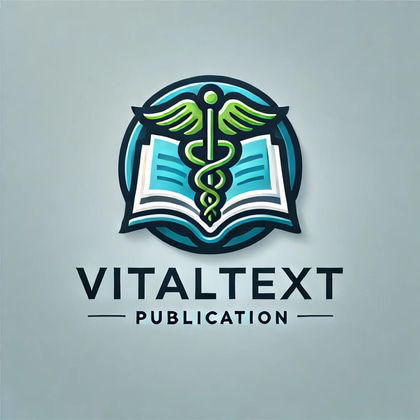Atal Bihari Vajpayee Medical University Lucknow Previous Year Question Papers
Biochemistry Paper-1 (Main), 2022 MBBS Batch ABVMU Lucknow
This is Biochemistry Paper 1 of 2022 MBBS Batch. This paper was conducted by Atal Bihari Vajpayee Medical University, Lucknow on NOVEMBER 2023
BIOCHEMISTRY
VitalText Publication
1/31/20253 min read
ATAL BIHARI VAJPAYEE MEDICAL UNIVERSITY, LUCKNOW
MBBS DEGREE EXAMINATION - 1st PROFESSIONAL - NOV - 2023
BIOCHEMISTRY - PAPER - I
SECTION A - Multiple Choice Questions (MCQs)
PAPER CODE: 2311130003
SET: D
Note: Choose one correct answer in the OMR sheet provided. No overwriting should be done.
The surface tension in the intestinal lumen between fat droplets and aqueous medium is decreased by:
a) Acetic acid
b) Conc. H₂SO₄
c) Bile acids
d) Bile SaltsThe key enzyme for utilization of ketone bodies is:
a) Thiosterase
b) Thiophorase
c) Thiokinase
d) ThiolaseThe enzyme required for the removal of H₂O₂ is:
a) NADPH oxidase
b) Myeloperoxidase
c) Catalase
d) Glutathione reductaseGlucose is:
a) Aldopentose
b) Keto pentose
c) Aldohexose
d) KetohexoseIn glycosylated hemoglobin, glycosylation takes place at:
a) Histidine residue
b) The N-terminal end
c) Serine residues
d) The C-terminal endThe Glycosaminoglycans responsible for transparency of cornea is:
a) Dermatan sulphate
b) Heparan sulphate
c) Chondroitin sulphate
d) Keratan sulphateTotal iron-binding capacity (TIBC) of plasma is referred to as the maximum iron binding capacity of the following protein:
a) Ceruloplasmin
b) Hemosiderin
c) Ferritin
d) TransferrinA person on a fat-free carbohydrate-rich diet continues to grow obese. Which of the following lipoprotein is likely to be elevated in his blood?
a) HDL
b) VLDL
c) LDL
d) ChylomicronRenal plasma flow is measured by:
a) Urine output
b) Para-amino hippurate clearance
c) Insulin clearance
d) Creatinine clearanceH₂S inhibits phosphorylation at complex:
a) Complex-IV
b) Complex-III
c) Complex-II
d) Complex-IAmong the following, the maximum redox potential is for:
a) Fe3+/Fe2+
b) Ubiquinone
c) Succinate/fumarate
d) NADH/NAD+Which hormone binds to surface receptors:
a) Prolactin
b) Androgens
c) Mineralocorticoids
d) GlucocorticoidsA laboratory measurement of the following enzyme in RBC is used to assess riboflavin deficiency:
a) FAD
b) FMN
c) Xanthine oxidase
d) Pyruvate dehydrogenaseAccumulation of long-chain fatty acids is seen in which of the following metabolic disorder:
a) Farber disease
b) Jamaican vomiting sickness
c) Zellweger syndrome
d) Refsum diseaseI-cell disease is due to enzyme deficiency in:
a) Mitochondria
b) Nucleus
c) Lysosomes
d) PeroxisomesThe following is not a phospholipid:
a) Cephalin
b) Cerebroside
c) Lecithin
d) SphingomyelinWhich of the following is a rate-limiting enzyme?
a) Malonate dehydrogenase
b) Acetyl CoA carboxylase
c) Phosphofructokinase
d) HMG-CoA reductaseAll are causes of metabolic acidosis except:
a) Diabetes mellitus
b) Addison's disease
c) Ingestion of antacids
d) UreterosigmoidostomySynthetic form of vitamin K is:
a) Roteinone
b) Menadione
c) Menaquinone
d) PhylloquinoneHepatic lipogenesis is stimulated by:
a) Insulin
b) Epinephrine
c) Glucagon
d) cAMP
ATAL BIHARI VAJPAYEE MEDICAL UNIVERSITY, LUCKNOW
MBBS DEGREE EXAMINATION - 1st PROFESSIONAL - NOV - 2023
BIOCHEMISTRY - PAPER - I
TIME: 3 Hrs
Max. Marks: 100 Marks (80 Theory + 20 MCQs)
NOTE:
Attempt all questions.
This question paper consists of two sections: Section A - Multiple Choice Questions and Section B - Theory Questions.
Both the sections have different paper codes. Write the correct paper code on the respective sheet.
Write the correct MCQ paper set on the OMR sheet.
Answer MCQs on the provided OMR sheet and theory questions on the provided answer booklet.
SECTION B - THEORY QUESTIONS
PAPER CODE: 2311230003
Q.1 Long Answer Question (15 MARKS)
i) Discuss the rationale behind the structural design of Lipoproteins. (2 marks)
ii) Describe how the lipids are transported in the body. (3 marks)
iii) Discuss the clinical significance of LDL and HDL. (3 marks)
iv) Discuss different types of dyslipidemias in detail. (7 marks)
Q.2 Clinical Case Scenario-based Structured Question (15 MARKS)
A young male suffered from high-grade fever with chills and rigor a few days back. After a peripheral blood smear examination, he was started on Primaquine (an antimalarial drug). The fever subsided the next day, but the patient developed symptoms of fatigue, dizziness, and breathlessness on slightest exertion. The patient also complained of dark-colored urine. On examination, his sclera was yellow, and spleen was marginally enlarged.
i) Which enzyme deficiency is expected in this case? (2 marks)
ii) Discuss biochemical basis of development of hemolytic disease in this patient. (4 marks)
iii) Name at least three antioxidants that stabilize RBC membrane. (3 marks)
iv) How do antioxidants stabilize the RBC membrane? (5 marks)
v) Does this deficiency offer protection against any disease? (1 mark)
Q.3 Short Note Questions (Approx 500 Words) (5 x 6 = 30 MARKS)
i) Describe the features of Lineweaver-Burk plot. Discuss the effects of different types of enzyme inhibitors on this plot.
ii) Schematic representation of the electron transport chain.
iii) Discuss the nutritional disorders of young children commonly prevalent in India.
iv) Discuss the phase 2 reactions of metabolism of xenobiotics with examples.
v) Discuss biochemical functions of calcium. Also discuss hormonal regulation of blood calcium level.
Q.4 Short Answer Questions (Within 100 Words) (5 x 4 = 20 MARKS)
i) Explain the role of carnitine in fatty acid metabolism.
ii) What is apoenzyme? Discuss the difference between prosthetic group, cofactor, and coenzymes with suitable examples.
iii) Define provitamins and antivitamins. Write one example of each.
iv) What is HbA1c? Explain its role in the diagnosis of diabetes mellitus.
v) Discuss functions of transmembrane proteins of the cell membrane.
VitalText Publication - All Rights Reserved
Publications
Providing previous year question papers and literature.
Support
© 2024. All rights reserved.
